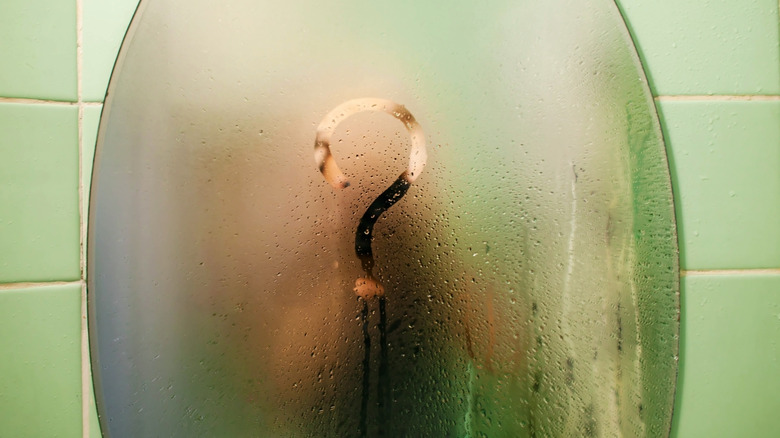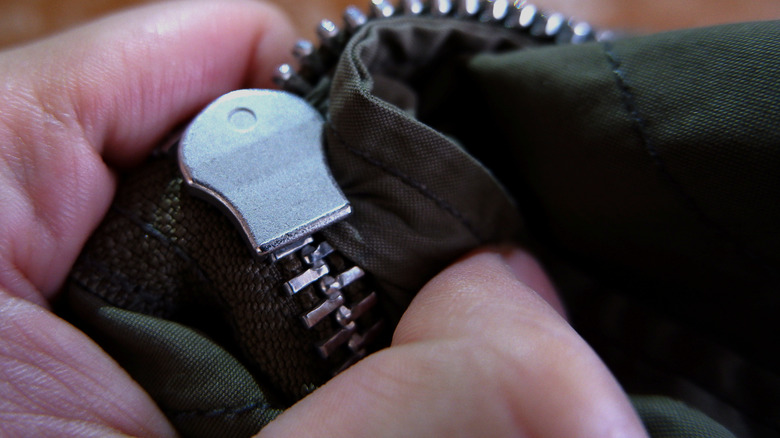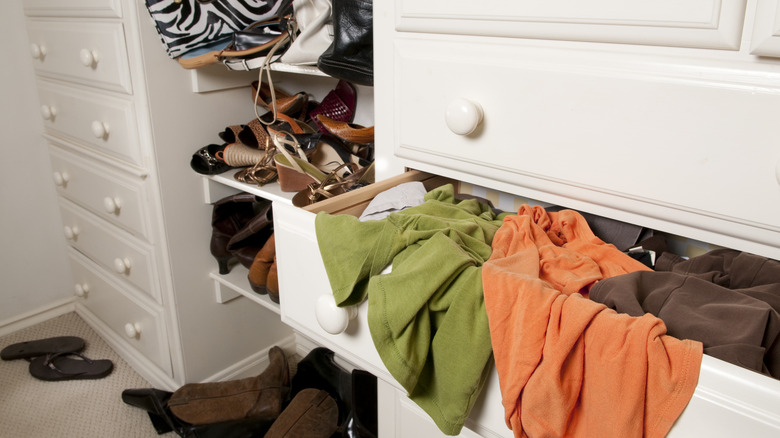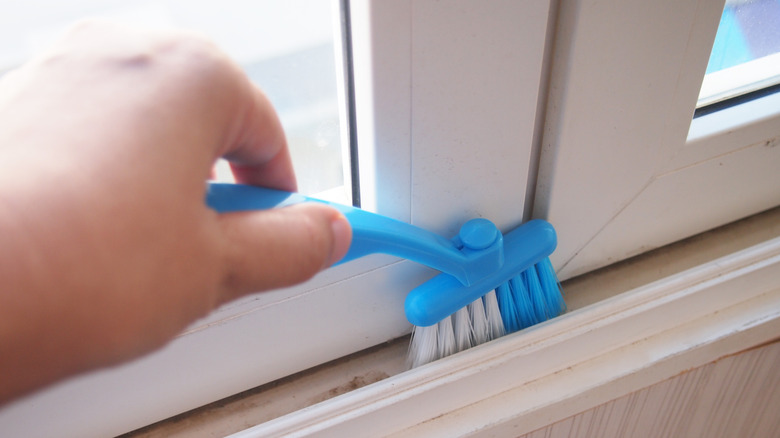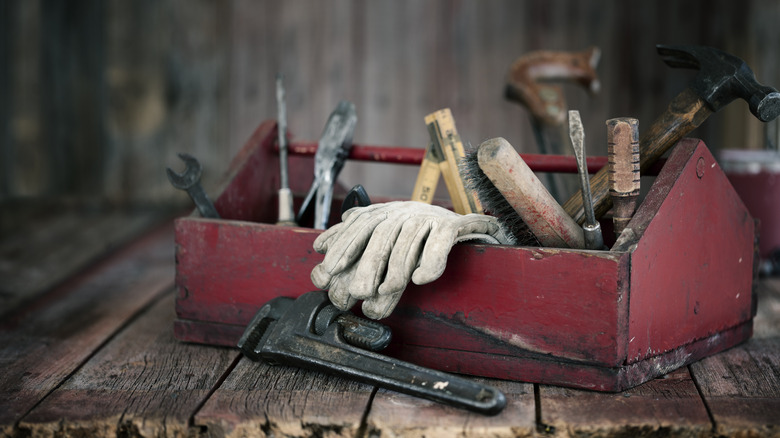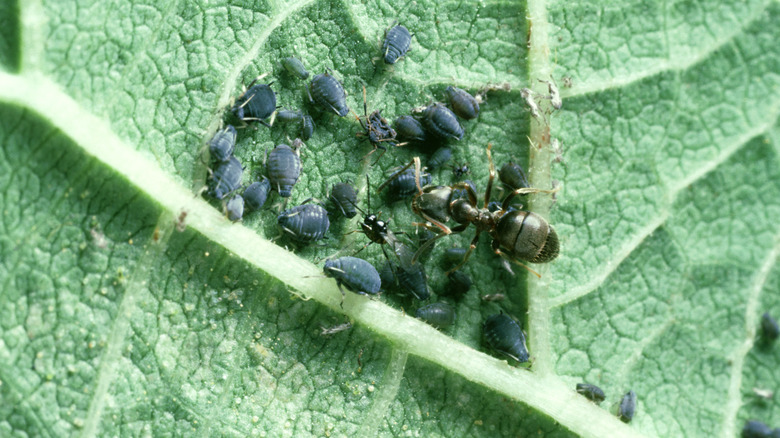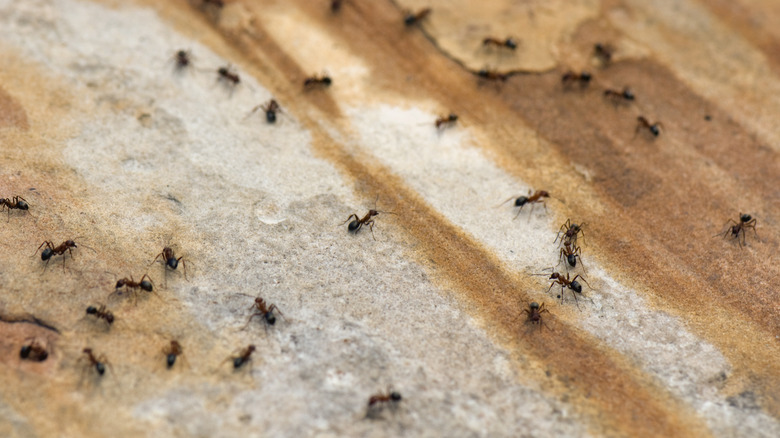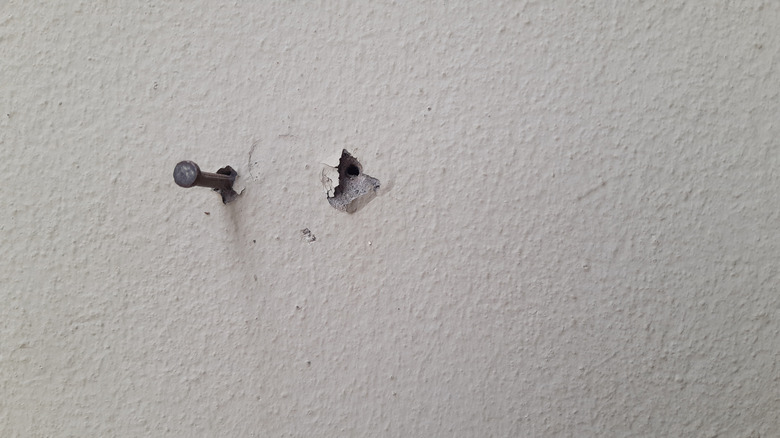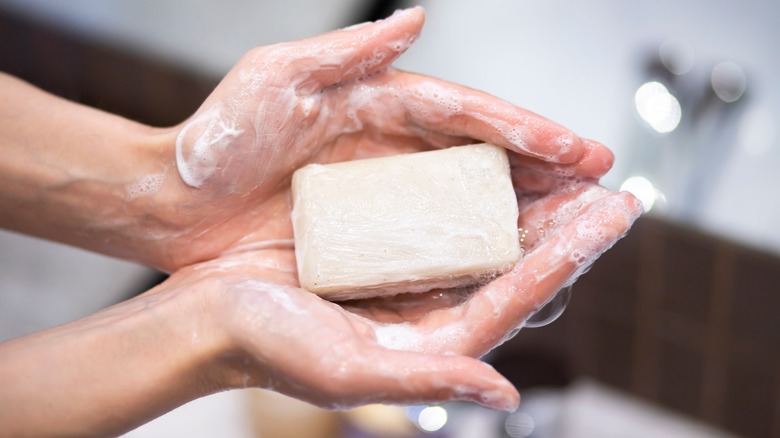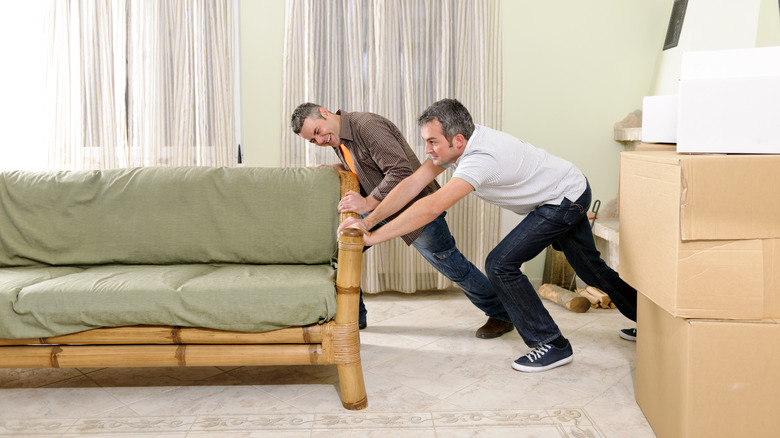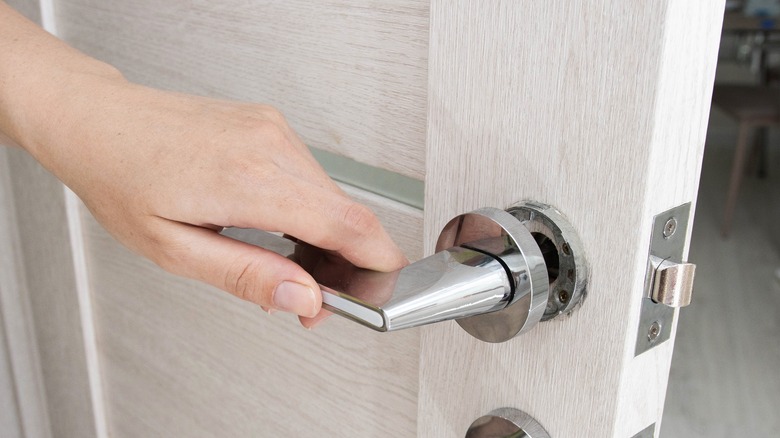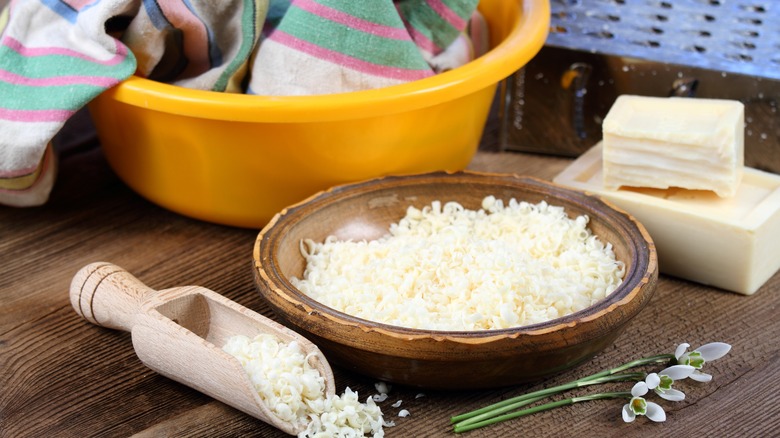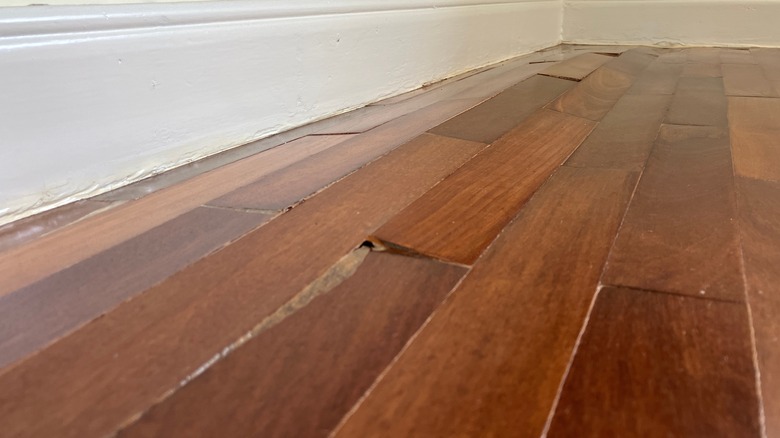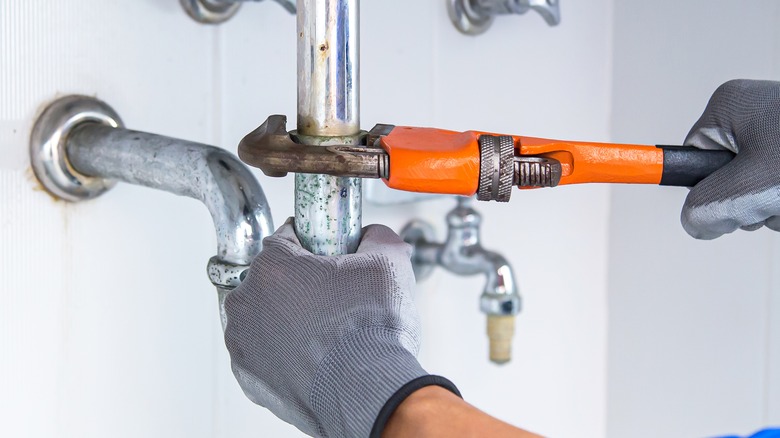20 Unexpected Household Uses For A Bar Of Soap
In the realm of household hacks, the bar of soap stands out as a surprisingly versatile tool. Beyond its primary purpose of cleansing, soap can be a game-changer in solving a myriad of small, but nagging, problems around your home. Whether it's keeping your bathroom mirror clear of fog, smoothing the operation of stubborn doors, or even warding off unwanted pests, the range of applications is as broad as it is unexpected. Each scenario showcases the ingenious ways in which everyday items can be repurposed to tackle problems we often accept as part of daily life.
The secret behind soap's wide-ranging utility lies in its composition. Traditional soap is made from natural fats or oils, many of which contain an alkali. The end result is a substance that can attract both water and oil molecules. This dual affinity allows soap to clean by capturing grease and dirt, making it easily rinsed away with water. But the benefits don't stop at cleanliness. The same properties that make soap effective at removing dirt also make it an excellent lubricant and moisture barrier, useful for quieting squeaky hinges and protecting metal surfaces from rust. Let's take a look at the other unexpected ways to use a bar of soap around your home.
Prevent foggy bathroom mirrors
Dealing with a foggy mirror after a steamy shower is one of those small daily annoyances that can throw off your entire morning groove. Here's the science bit: The fog forms because the warm, moist air from your shower collides with the cooler surface of your mirror, resulting in condensation. It's like a mini cloud forming right there in your bathroom. But fear not, because there's a surprisingly simple hack involving just a bar of soap that can keep your mirror clear, transforming your post-shower experience from frustrating to seamless.
Rub a regular bar of soap over your mirror. You don't need to go overboard; a gentle coating will suffice. After you've applied the soap, it's time for a little elbow grease. Grab a towel or a microfiber cloth — dampening it slightly if the soap is stubborn — and wipe the mirror until it's shining and clear. Now, let's talk prevention. Although this trick comes in handy, keeping fog at bay isn't just about treating the mirror; it's also about tackling the moisture in the air. A well-ventilated bathroom is key. Consider running a fan or cracking open a window during your shower to minimize the moisture level in the room.
Loosen a stuck zipper
Stuck zippers are a common yet frustrating problem that can happen at any time. It's usually caused by fabric getting caught in the teeth or by the teeth themselves losing alignment. This can turn a simple task like zipping up your jacket or bag into a battle of wits between you and the zipper. But there's a straightforward trick to fix a stuck zipper: using a bar of soap. Gently rub the soap along both sides of the zipper's teeth. Make sure you cover the entire area affected by the jam, applying the soap thoroughly over and in between the teeth. The soap acts as a lubricant, easing the friction and making it easier for the zipper to move.
After you've applied the soap, it's time for a gentle test. Try moving the zipper up and down slowly. The soap should make the zipper slide more smoothly, allowing it to move past the stuck point. With a bit of patience and careful manipulation, the zipper should start functioning properly again. However, a word of caution: Be mindful of the type of soap you use. Colored soaps may leave a visible residue on your fabric, which might be difficult to remove. Opt for a white or clear soap to avoid staining your items. This simple precaution ensures that your solution doesn't end up creating a new problem.
Mark hemlines on fabric
When you're tailoring a garment, getting the hemline just right is crucial. A perfectly placed hem can make the difference between an outfit that looks professionally tailored and one that misses the mark. Sometimes, you find yourself ready to adjust a hem, but there's no tailor's chalk in sight. Don't let this hiccup derail your sewing project. Instead, reach for a piece of soap to mark the fabric. Take the soap and gently mark the new hem length on the fabric. But don't stop there — remember to account for the hem allowance, marking it as well. This extra space is where you'll fold the fabric to create a clean, finished edge.
The beauty of using soap lies in its temporary nature. The marks it leaves are clear enough to guide you as you sew, yet they won't commit you to a lifetime of lines on your fabric. After you've completed the hem, any remaining soap can easily be removed. If they don't simply rub off, a damp cloth can wipe the slate clean, leaving your garment looking as pristine as ever.
Use it as a drawer freshener
Drawers, especially those tucked away in the corners of your bedroom or closet, have a tendency to develop a musty smell over time. This is often due to a lack of ventilation, combined with the lingering moisture that can get trapped inside. Whether it's from the ambient humidity in your home or the occasional storing of items that aren't completely dry, these conditions create the perfect environment for stale odors to thrive. This is where that bar of soap comes in. To keep your drawers smelling fresh, choose a bar of soap with a scent you love — lavender, rose, and citrus are just a few options. Before you tuck the soap away, wrap it lightly in some tissue paper or a paper towel to prevent it from directly contacting your clothes. Once wrapped, place the soap bar among your clothes.
While this soap trick works wonders, incorporating a few preventative measures can enhance its effectiveness. First, ensure that all items are completely dry before storing them away. Even slightly damp clothes can introduce unwanted moisture into the drawer. Secondly, consider using silica gel packets or a small container of baking soda in each drawer to absorb excess moisture and odors. These simple steps, combined with your scented soap, will keep your drawers smelling pleasant and your clothes ready to wear, imbuing your daily routine with freshness and cleanliness.
Clean window tracks
Window tracks often accumulate dirt, debris, and even mold because they are the final resting place for everything the wind blows in and what condensation drags down. From pollen and dust to insect remains and pet hair, these unwelcome deposits can not only make the tracks look unsightly, but can also interfere with the smooth operation of your windows. Cleaning them is crucial for your health too. Allowing dirt to build up can lead to mold growth, which poses respiratory risks, especially for those with allergies or asthma. Regular cleaning ensures your windows function properly, letting in fresh air and sunlight without any unwanted grime. This is when soap comes in.
Begin by giving the window track a thorough clean using a toothbrush and some hot, soapy water to scrub away any stubborn dirt that's built up in the track. Once the track is clean and dry, use a bar of soap to lubricate the track. Run the soap along the track, focusing on areas where the window tends to stick. This will significantly reduce friction, making it easier to open and close your windows without exerting unnecessary force.
Remove rust on tools
Rust on stainless steel can catch you off guard, especially since its name suggests it should be immune to such problems. Yet, stainless steel, like any other metal, is not entirely resistant to rust. It's the interaction with oxygen that sets the stage for rust to develop, transforming the metal's surface into a reddish hue known as ferric oxide. Although its coating gives it a fighting chance against corrosion, even the best defenses can be breached, and that's where a simple maintenance routine comes in.
To prevent metal from rusting and maintain the integrity of your stainless steel, you don't need an arsenal of cleaning agents — warm, soapy water and a soft cloth are your best allies. This method is effective as it removes stains, grime, and any surface debris that could potentially harbor moisture, which, in turn, promotes rust. When cleaning your stainless steel, it's important to steer clear of harsh chemicals. These can strip away the protective layer and do more harm than good, leaving your surfaces vulnerable to corrosion. Soap is the way to go!
Soothe itchy bug bites
Ever wondered by bug bites itch so much? It's not just your skin reacting to the annoyance of an uninvited guest; there's actually a bit more to it. When bugs bite, they inject saliva into your skin. This saliva contains proteins that most people's immune systems react to by creating histamines, which in turn cause the itching and swelling. It's your body's way of saying, "Hey, something's not right here." Now, onto dealing with the aftermath of these itchy encounters. A simple yet effective starting point is to wash the bites with soap and water. Soap acts as a mild cleanser that not only keeps the bite area clean, but also helps in washing away the bug's saliva and any bacteria on the skin that could cause infection. This cleaning process can slightly calm down the immune response, offering you some relief from the itching.
However, we all know that sometimes "try not to scratch" is easier said than done, and soap and water might not always cut it when it comes to severe itching. If you find yourself in a scratch-spiral, unable to get relief, it might be time to visit the doctor. In many cases, doctors recommend antihistamines, which are specifically designed to counteract the histamine your body's producing in response to bug saliva.
Kill aphids and other plant pests
Have you ever noticed your plants looking a little under the weather, perhaps spotted with holes or covered in a mysterious webbing? Chances are, they've become the latest dining spot for a variety of pesky insects. From aphids and spider mites to whiteflies and mealybugs, these unwelcome guests suck the life out of your plants, quite literally. But before you reach for harsh chemicals, a simple bar of mild hand soap can be your first line of defense to get rid of aphids and other plant pests. Here's how to whip up your very own insecticidal soap spray.
First, shred the soap into small pieces, aiming for about a tablespoon of these shreds for your mixture. Combine these soap shreds with 4 liters of warm water, stirring until fully dissolved. With your mixture prepared, fill a spray bottle and prepare to apply it to your plants. Ensure you thoroughly douse every part of the plant with the mixture, paying special attention to the undersides of leaves and the tips of new growth, as these areas are particularly attractive to pests. It's important to choose the right time for application; spraying in the cooler evening hours can help avoid potential damage from the sun heating the soap-covered foliage.
Eliminate ant trails
Ever noticed a line of ants marching through your home and wondered how they all seem to know the perfect path to their target? It's not magic; it's all about the trails. Ants are social insects that rely on chemical trails to communicate and navigate. When a scout ant finds a food source, it leaves a pheromone trail on its way back to the colony, guiding its fellow ants to the bounty. These trails are invisible to the human eye, but are a superhighway for ants. Luckily, experts say you can dismantle this ant highway system by simply cleaning the areas with some soap. Mixing vinegar with some soapy water creates the perfect concoction for erasing those pheromone trails. Grab a cloth or sponge, dip it into your chosen solution, and wipe away the trails.
To completely get rid of ants, it also helps to understand how they are entering your home and what's attracting them. It could be anything from a splash of juice on your counter to a crumb under your dining table. Once you've identified their entry points and attractions, it's time to take action. Once you know how they're getting in, close up any cracks that ants use as doorways into your home. This could mean applying caulk to window edges or filling in gaps in your baseboards. Next, get rid of the source of their attraction — clean up any spills, crumbs, or exposed food that's drawing them in.
Use as a nail hole filler
Holes in walls can come from a variety of sources, whether it's from hanging pictures, mounting shelves, or the occasional accident. While they might seem like small issues, they can be unsightly, drawing unwanted attention and disrupting the clean lines of your room. If you find yourself in a pinch, needing a quick fix for those pesky nail holes, you might be surprised to learn that soap can come to your rescue. It's a handy trick for when you're in a hurry or if you're prepping to paint. Just grab a bar of soap that matches the color of your wall as closely as possible. Gently rub the soap over the hole until it's filled. This method works best for smaller holes, and while it might sound unconventional, it can make those holes nearly invisible to the untrained eye.
However, it's important to remember that using soap is more of a temporary cover-up than a permanent fix. If moisture is present, soap can dissolve over time and doesn't offer the same durability as traditional spackle or putty. If you're looking for a more lasting solution, consider using spackle or joint compound. These materials are designed for wall repairs, providing a sturdy fill that can be sanded smooth and painted over, ensuring your walls look as good as new.
Disinfect dirty hands from gardening
Before you dive into gardening, washing your hands with soap is a crucial step to protect both you and your plants. Soil can harbor bacteria and fungi that, while often harmless, can cause problems if they enter cuts or abrasions on your hands. Additionally, clean hands help prevent the transfer of any harmful pathogens to your plants, ensuring both your health and your garden's thrive. Apply a generous amount of soap and lather well, covering all surfaces of your hands, between your fingers, and under your nails. It's under your nails where dirt and bacteria love to hide, so here's a pro tip: Before you start, gently run your nails over a bar of soap. This simple action creates a barrier under your nails, trapping dirt and making it easier to remove after you're done in the garden.
Spend at least 20 seconds washing your hands, which is roughly the time it takes to hum "Happy Birthday" twice. Rinse your hands under clean, running water, ensuring all soap traces are gone. Dry your hands with a clean towel or air dry them. This routine might seem basic, but it's a powerful way to reduce the risk of infection and keep your garden a safe, healthy environment for everything you're growing.
Use for sliding heavy furniture
Moving furniture can feel like a Herculean task, especially when you're trying to slide it across carpet. The friction between the furniture and the carpet fibers can make it seem like the carpet is holding onto your furniture for dear life. Luckily, there's a slick little trick that can make this job a whole lot easier: using soap. Rub a thin layer of soap on the route on the floor or carpet where you'll be pushing the furniture. You're not going for a deep clean here; you just need a little bit to reduce the friction and create a slippery surface that will reduce the grip of the carpet fibers, allowing the furniture to glide more smoothly as you push it. But hold on a second before you start pushing with all your might. It's crucial to test the sliding first. Give the furniture a gentle nudge to ensure the soap is doing its trick. This not only helps you gauge how much force you'll need but also prevents any accidental damage to your furniture or carpet.
And here's a word of caution: Be careful when moving your furniture. Even with the reduced friction, it's easy to underestimate the weight and balance of what you're moving. Take it slow to avoid any strains or mishaps. Plus, moving furniture carefully ensures you won't damage the piece or the floor underneath.
Quiet squeaky door hinges
Dealing with squeaky door hinges is a common household nuisance that can turn your peaceful home into a creaky, spooky-sounding space. Often, these squeaks arise from friction caused by metal parts grinding against each other, a natural consequence of the wear and tear doors undergo over time. Humidity changes can also cause wood to expand and contract, exacerbating the issue. Before you call in a professional or resort to forceful methods that could damage the wood, using a bar of soap might help.
Bar soaps are packed with oils, which are just the ticket for silencing those noisy hinges. To tackle a sticky door, first identify the area where it tends to stick. Then, take your bar of soap and rub it directly onto the problematic section of the door. The soap creates a powdery film that helps to soak up moisture, reducing the swelling of the wood and allowing your door to move freely again. You can repeat the process as often as necessary throughout the humid months without worrying about damage. After you've applied the soap, it's time to work it into the hinges. Open and close the door several times to spread the soap evenly, ensuring it penetrates the nooks and crannies of the hinge mechanism.
Use as a detergent to wash and remove stains from clothes
Tackling stains on clothes can sometimes feel like you're trying to solve a complex puzzle. Whether it's a splash of coffee, a drop of red wine, or dreaded grass stains, each type brings its own challenge, stubbornly clinging to fabrics and resisting removal. But don't let these tough adversaries win; soap emerges once again as a simple, effective weapon.
When you spot a stain, the first step is always to treat it with cold water as quickly as possible. This helps to prevent the stain from setting deep into the fibers of the fabric. After you've given it a good rinse, it's time to bring out the soap. Whether you choose a bar of soap or liquid dish detergent, both have properties that can break down the components of most stains. Gently rub the soap into the stained area, letting its cleansing action start to work its magic. After a thorough but careful application, rinse the area again with cold water to wash away the stain along with the soap.
Use as a shoe deodorizer
Ever slipped off your shoes only to be greeted by a less-than-pleasant aroma? It's a common issue that can leave you wrinkling your nose in dismay. The root of smelly shoes lies in the sweat and moisture that accumulate over time. Your feet have plenty of sweat glands, and when that sweat gets trapped in your shoes, it creates a cozy haven for bacteria. These bacteria are the real party crashers, feasting on the moisture and leaving that notorious stink in their wake. But before you consider relegating your favorite pair to the back of the closet, use soap to freshen them up.
Soap bars, especially those that are scented, can do wonders for absorbing unwanted odors and deodorizing smelly shoes. Just insert some soap into each shoe and let it sit for some time, preferably overnight. While you're catching up on your sleep or going about your day, the soap works its magic, absorbing the odors and leaving a fresh, clean scent in its place. This method is not only incredibly easy, but also cost-effective. Instead of investing in specialized shoe deodorizers, you're utilizing something you likely already have at home. Plus, it's a gentle solution that you can easily wash off.
Temporarily deter deer from plants
When it comes to your garden, deer might just see it as their personal buffet. They're not picky eaters and will happily munch on a wide variety of plants, from your prized roses and tender hostas to those hardy azaleas and even the young shoots of trees. If you've noticed your garden looking a bit like a salad bar aftermath, it's time to take action — but in a way that's gentle on both the deer and your plants. Grab a bar of soap and a bucket. Fill the bucket with water and let the soap soak in it. About once a week, take this concentrated solution, dilute it with an equal amount of clean water, and pour it into a spray bottle. Now, you're armed and ready to protect your plants.
The scent of the soap is a natural deterrent, creating an invisible barrier that deer are likely to avoid. It's a clever way to keep your garden intact without causing harm to the deer or using harsh chemicals. However, keep in mind that this is a temporary solution to get rid of deer. Rain and watering can wash away the soap solution, so regular reapplication is necessary, especially after a heavy downpour. Plus, particularly determined deer might eventually get used to the scent, so it's a good idea to combine this method with other deterrent strategies for the best protection. This soap trick is just a simple, eco-friendly starting point for keeping your garden lush and untouched by hungry visitors.
Quiet noisy floorboards
Creaky floorboards are like the sound effects of a spooky movie, except it's your home, and the only thing haunting you is the need for some quick maintenance. These persistent sounds often stem from the floor's natural aging process. This constant pressure from foot traffic also creates friction and the all-too-familiar creaking noise. Moreover, moisture can seep into the wood, causing it to expand and contract, which can exacerbate the friction between floorboards or between a floorboard and its subfloor. Before you start planning a major overhaul, a bar of soap can be the hero in this scenario. This might sound unconventional, but it's an effective temporary fix. Take a bar of soap and firmly rub it over the squeaky sections of your floorboards, focusing on the edges where the most friction occurs. The soap acts as a lubricant, filling in the tiny gaps that contribute to the noise, and allows the wood pieces to move more smoothly against each other.
Make sure you're not skimping on the soap; a thorough application is key to achieving the best results. The aim is to coat the problem areas well enough to reduce the friction that leads to creaking. This simple trick can save you from the hassle and expense of major floor repairs, offering a quick fix that you can apply in minutes.
Use for detecting leaks
When it comes to household maintenance, tracking down leaks can feel like playing detective. Whether it's under sinks, around windows, or in the labyrinth of pipes that run through your home, leaks have a way of hiding out in the most inconvenient places. Finding them early can save you a lot of trouble and money, but how exactly do you catch these elusive drips? Interestingly, soap, a staple in every home, can be your ally in this quest. Most experts might point you towards dish soap for this task, and they're not wrong. Dish soap is designed to create suds easily, making it perfect for detecting leaks. However, if you find yourself with only bar soap at hand, don't worry. You can still put it to good use. Start by cutting the soap into thin slices. Then, dip these slices in warm water until they thoroughly break down. This solution will be your leak detector.
Now, why and how does this method work? It's all about the soap's sudsy nature. When you apply the soapy solution to areas where you suspect a leak, keep an eye out for bubbles. If there's air escaping from a crack or hole — no matter how small — it will push through the soap solution, creating bubbles at the site of the leak. This visual cue is a clear indicator that you've found a spot that needs your attention. It's a simple yet cost-effective way to find leaks.
Lubricate screws for furniture assembly
When you're in the middle of assembling furniture or tackling a DIY project, encountering a stubborn screw that just won't turn can be frustrating. You might wonder why these tiny metal pieces can cause such a big headache. The reason is friction. As you twist and turn, trying to drive a screw into wood or another material, the friction generated can make it difficult to move, and sometimes, you might even risk damaging the screw or the material itself. But, if you haven't guessed by now, soap once again emerges as a surprising hero.
By sliding the screw across the soap, you efficiently apply a lubricating layer to its threads. This soap layer acts as a barrier between the screw and the material, significantly reducing friction. As a result, the screw turns more easily into the material, saving you both effort and time. Plus, this little trick doesn't just make the screwing process smoother; it also helps prevent damage to the screws. Stripped or damaged screws can become a nuisance, making them difficult to remove or adjust later on.
A bar of soap offers a few benefits
Keeping a bar of soap by your bed might sound like an oddball move, but hear us out. It's not just for a quick hand wash. Some folks swear by it for two pretty neat reasons: warding off insects and even helping with restless legs at night. And we're not talking about any soap — Zote soap, that big pink bar known for laundry, is a prime candidate. So, about those uninvited insect guests which we briefly mentioned earlier. Well, it turns out that certain soaps, especially those with punchy, natural scents like lavender and coconut, just might make bugs think twice before crashing your sleep party. It's all about the smell. These scents don't exactly create an invisible shield, but they do seem to make your bed less appealing to critters.
Now, on to the restless legs. While there's no hard proof that soap is a miracle cure for restless legs syndrome (RLS), there's something about those calming scents. According to a 2012 study published in the Evidence-Based Complementary and Alternative Medicine journal, fragrances like lavender and coconut might chill out your parasympathetic nervous system. That's the behind-the-scenes system that helps you relax. So, maybe, just maybe, it could calm those dancing legs too. Putting a bar of soap under your sheets might be one of those "why not?" kind of things. If it can keep bugs at bay and possibly help you kick less in your sleep, it could be worth a shot. Plus, your bedroom will smell pretty great, which is never a bad thing.

